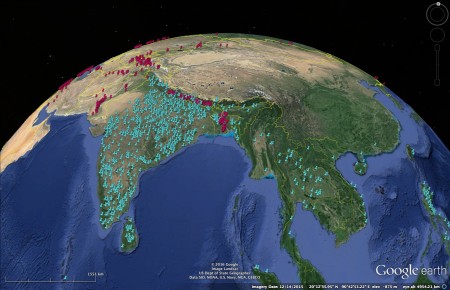Good to see FAO taking the lead in pulling together nutritional data on pulses, in celebration of the International Year of Pulses. Especially since variety-level information will be sought, according to FAO Nutrition Officer Ruth Charrondière .
…if a micronutrient deficiency is identified within a certain region or population, governments and nutritionists can pinpoint the varieties of pulses that contain the highest levels of the micronutrients, and encourage their production on farms and home gardens in these areas. Governments can also use the data to enrich food based dietary guidelines and national food composition tables. Furthermore, researchers and the private sector can use the food composition data to develop new, nutrient-rich varieties of pulses through cross-breeding and selective breeding, and include these improved varieties in mass production programmes.
There is demand for that sort of thing.
